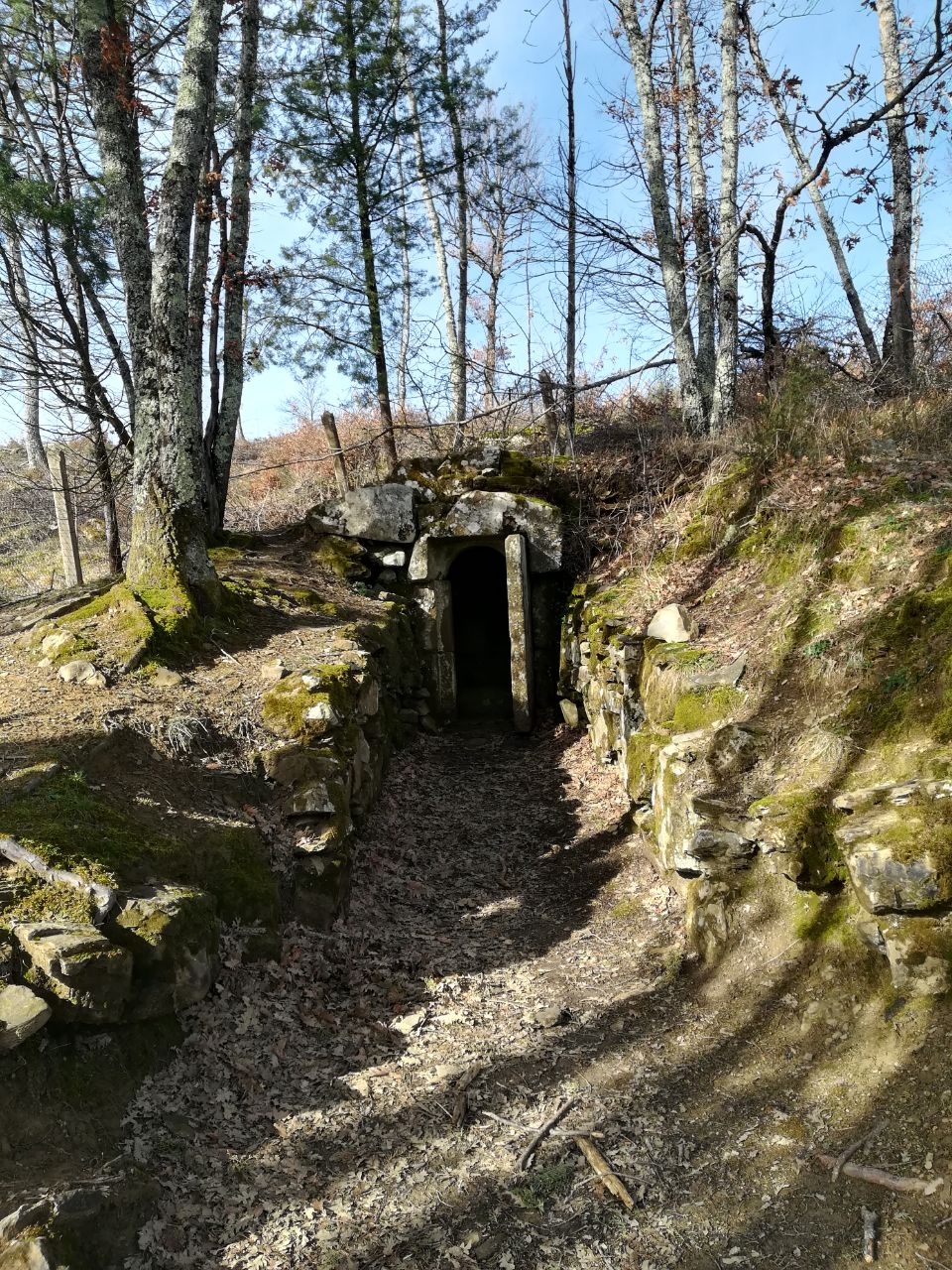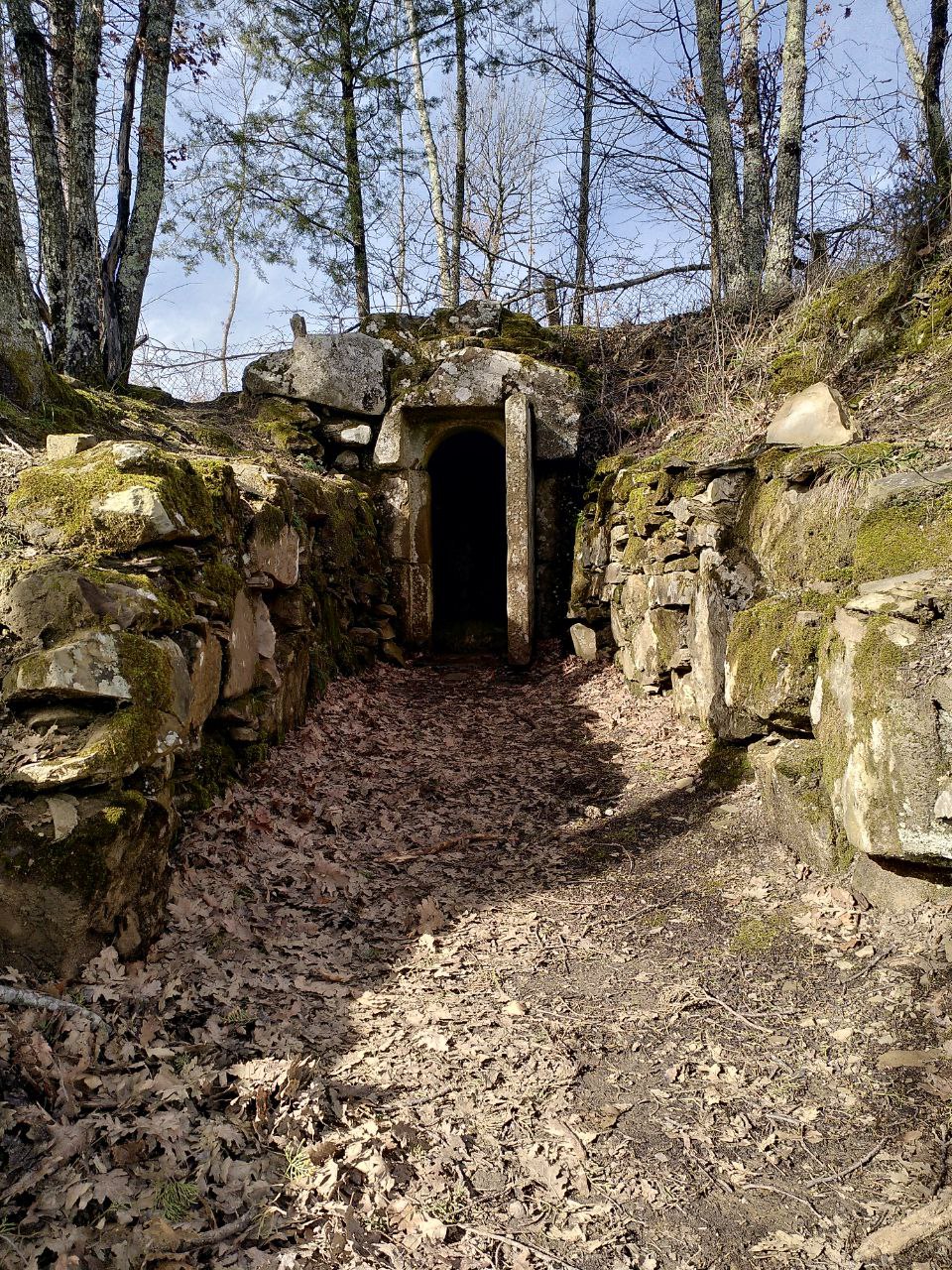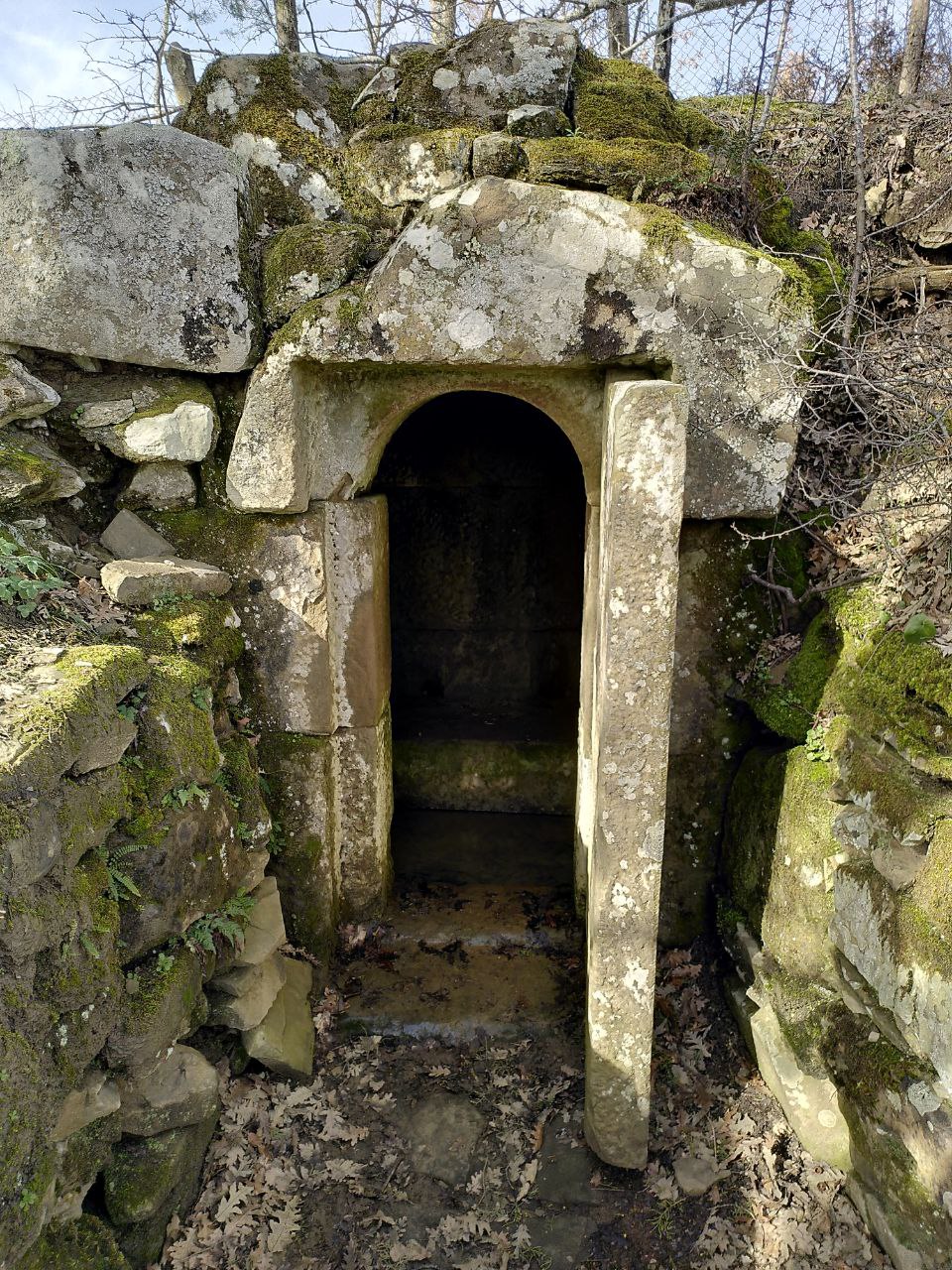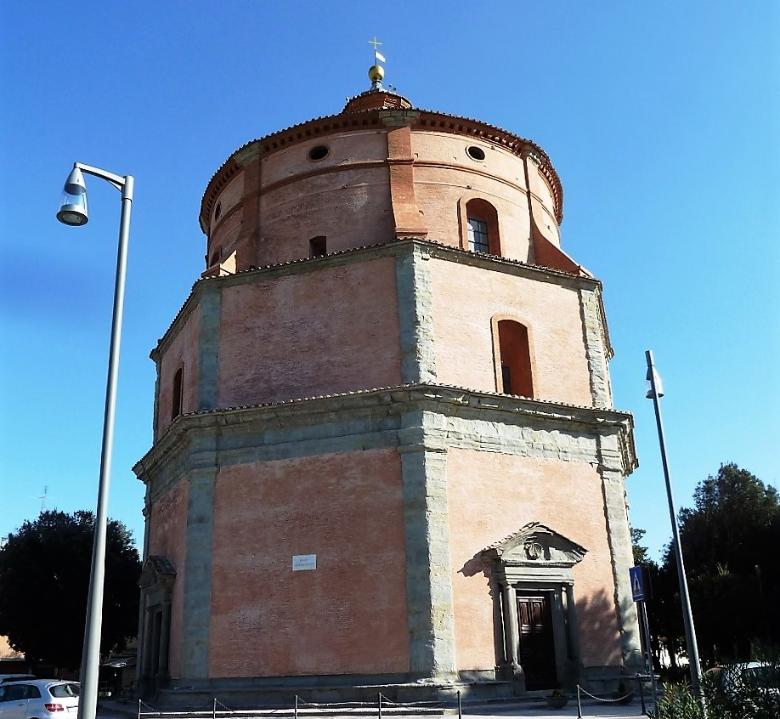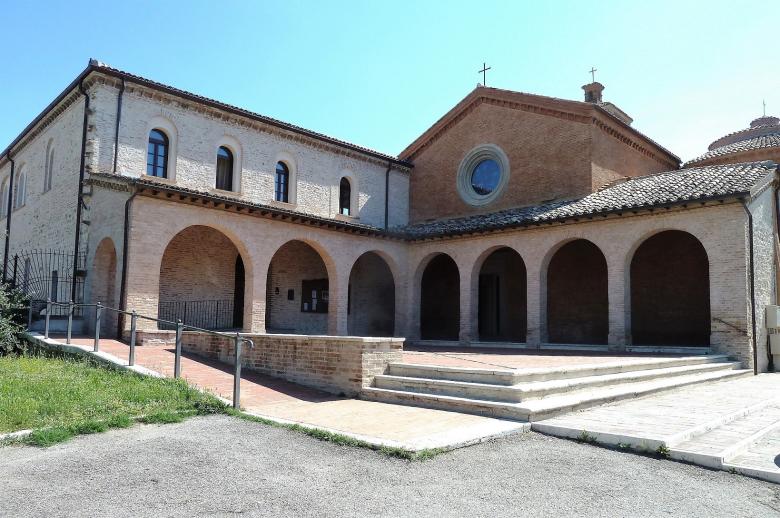The small size of the internal chamber (1.26 x 1.12m) comprises of a rectangular room up of a little more than 1m in length, with the interior walls built from local stone blocks, perfectly slotted together without mortar and arranged in three rows. A platform is attached to the end wall to display the urn and the burial objects, which lie right in the centre of the room, and is made up of one single slab. To build the vaulted roof of the tomb, 5 stone blocks have been arranged radially, working their way upwards and fitting together perfectly to create a semicircular shape. The tomb was closed off using a smoothed, parallelepiped stone slab, with truncated cone pivots on the end to act as hinges. The door and the large, triangular block of stone placed over the tomb's opening are perfectly smoothed on the surface, and were therefore designed to be visible.
The travertine urn, found on the platform inside the chamber by the tomb's discoverers, has a double lid, and the box containing the ashes and badly burned bones of the deceased, the front of which is well smoothed and absent of any decoration. The back of the urn features an inscription, engraved in letters of the Neo-Etruscan alphabet, bearing the first name - Arnth - and the family name of the deceased: Cairnina. Because of this, scholars have suggested a connection with the name of the Caina stream, whose springs gush just a short distance away from the tomb. Several restoration efforts, also aimed at ensuring the safety and viability of the place, have been carried out over time, making sensitive changes to the original, such as the expansion of the access corridor and the strengthening of the tomb's cover slabs, which were tampered with at the time of discovery.
Bibliography
Pianu G. (1985), "Perugia", Itinerari Etruschi 1, Milano, Electa
Matteini Chiari M. (1975), "La tomba del Faggeto in territorio perugino", Quad. Ist. Arch. Univ. di Perugia, 3, Roma, De Luca
























